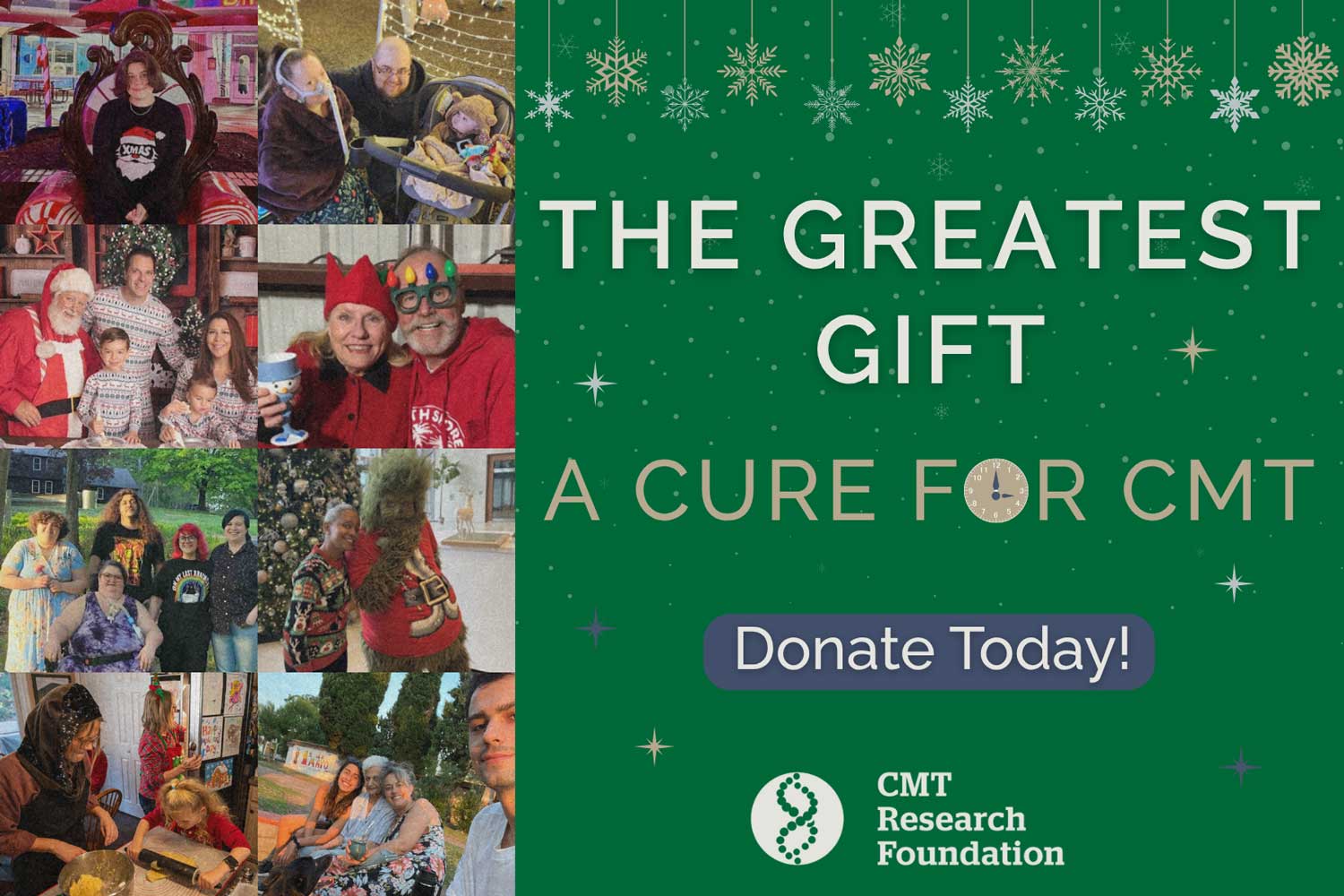The Greatest Gift-A Cure For CMT

Celebrate Their Stories and the Traditions They Love. Give to Drive a Cure for Charcot-Marie-Tooth Disease: All Donations Are Doubled up to $150,000 Through December 31.
Imagine finally getting an answer for the symptoms that have been affecting you for years — only to hear your doctor say, “There is no treatment and there is no cure.” The relief of a diagnosis is instantly replaced by uncertainty about how quickly your condition will progress, how much your life will change, and what the future will hold. You learn that this disease could one day affect your children or grandchildren, and the reality sets in: right now, there are no FDA-approved therapies and little guidance to offer hope or clarity.
For those living with CMT, this is the reality.
This disease gradually takes away the ability to fully participate in daily life and the cherished traditions that make it meaningful — and it steals precious time. Time to continue putting up holiday villages, time to keep baking cookies with family, time to gaze at holiday lights, time to wrap presents for loved ones, and time to share in the moments without pause.
This holiday season, we invite you to explore the personal stories of CMT patients as they share the moments and traditions that matter most, and the challenges CMT brings. Use the arrows below to read each story, and as you connect with them, please consider making a donation in their honor.
Thanks to the Bentzin Family Foundations, your donation will be DOUBLED up to $150,000 through December 31.
CMTRF is harnessing the most advanced science and bringing together leading experts from around the world to discover potential treatments — and ultimately a cure — for CMT. Every gift this holiday season, no matter the size, directly supports this vital research. Together, we can give CMT patients the greatest gift of all: a cure, and the time to continue making memories and enjoying the traditions they love.
The CMT Research Foundation is registered as a 501(c)(3) nonprofit organization. Contributions are tax-deductible to the extent permitted by law.

Alexander Ferrera
Florida, Living With CMT2
When Alex was diagnosed with CMT in early 2025, it was both a moment of clarity and a turning point. The diagnosis came as a complete surprise — his CMT is spontaneous, with no known family history — marking the start of a new chapter in his life.
CMT has changed his daily life. He relies on foot braces for balance, takes care to avoid falls, and has had to modify activities he loves, like playing soccer with his kids. “It’s tough when your children want you to join in, and you physically can’t the way you used to,” he said.
This will be his first holiday season since his diagnosis, and he’s learning to adapt. Alex treasures Christmas with his children — watching their excitement as they open presents and enjoying the elf’s playful mischief each morning. “I pray that my CMT progresses slowly, so I can continue to experience the holidays with my loved ones for many years to come.”
The hardest part, he admits, is losing the ease and confidence he once had. “Every step requires awareness, and the fear of falling is always in the back of my mind.”
Time now carries new meaning. “You never know when something will be the ‘last time,’ which makes being intentional about how you spend time even more important.”
A treatment or cure would mean hope — not just for Alex, but for future generations. “Your support brings real progress. What may seem like a small gift today could be the breakthrough tomorrow that helps someone walk, run or simply live without pain.”
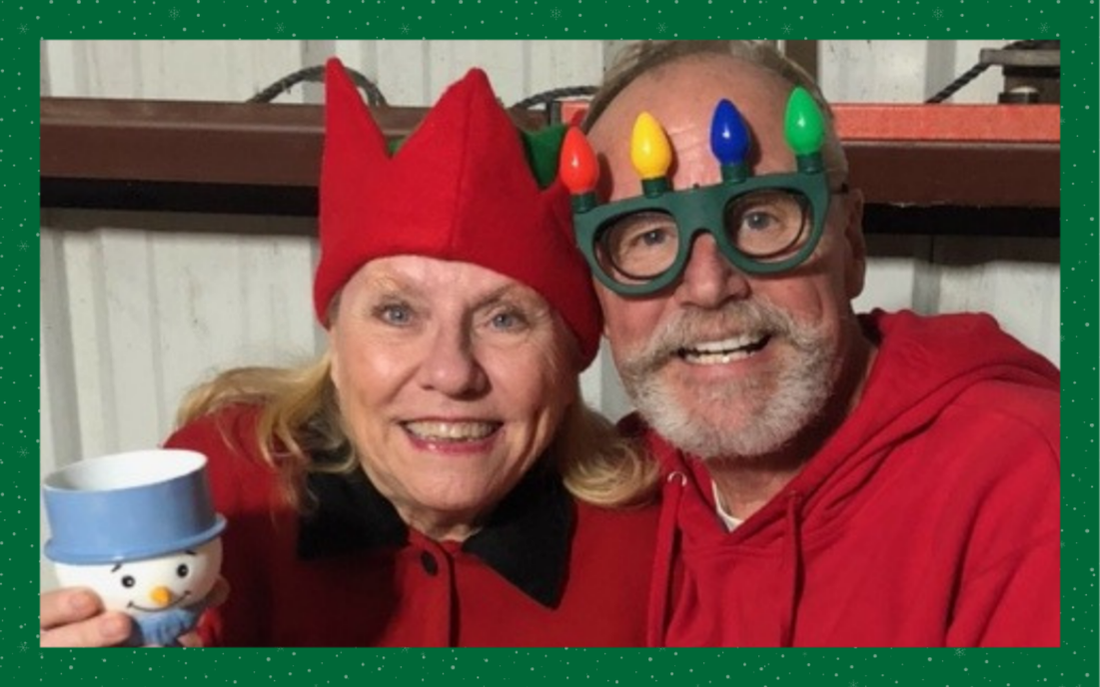
Linda Frakes
North Carolina, Living With CMT1A
Diagnosed at just seven years old, Linda has faced CMT her whole life. As the disease has advanced, she has relied on a wheelchair for the past three years, after using a walker for more than a decade.
Once passionate about cooking, decorating the Christmas tree, entertaining, and making her famous broccoli cheese casserole, Linda has had to let go of many traditions she loved. Her husband, Michael, now does the cooking, the cleaning, and helps with decorations, lovingly supporting her every step of the way. Together, they’ve celebrated 42 years of marriage.
Despite what she’s lost, Linda treasures the holiday traditions she can still enjoy. Each year, she lovingly sets up her Christmas village, welcoming friends who come to admire the display. “It means everything to me — I really don’t want this to end,” she says. She also finds joy in quiet moments with friends, sipping eggnog, listening to Christmas music, and reflecting on the true meaning of the season.
Linda knows the hardest part of CMT is the loss of independence and the time she’s lost with the activities she once loved. Yet her hope is for the future: treatments and cures for children just beginning their journey with this debilitating disease. “I want to live in a world where no parent has to bear the guilt of passing on this disabling disease — our mother certainly did. We are so close — it will happen. Please continue to support this effort as much as you are able.”
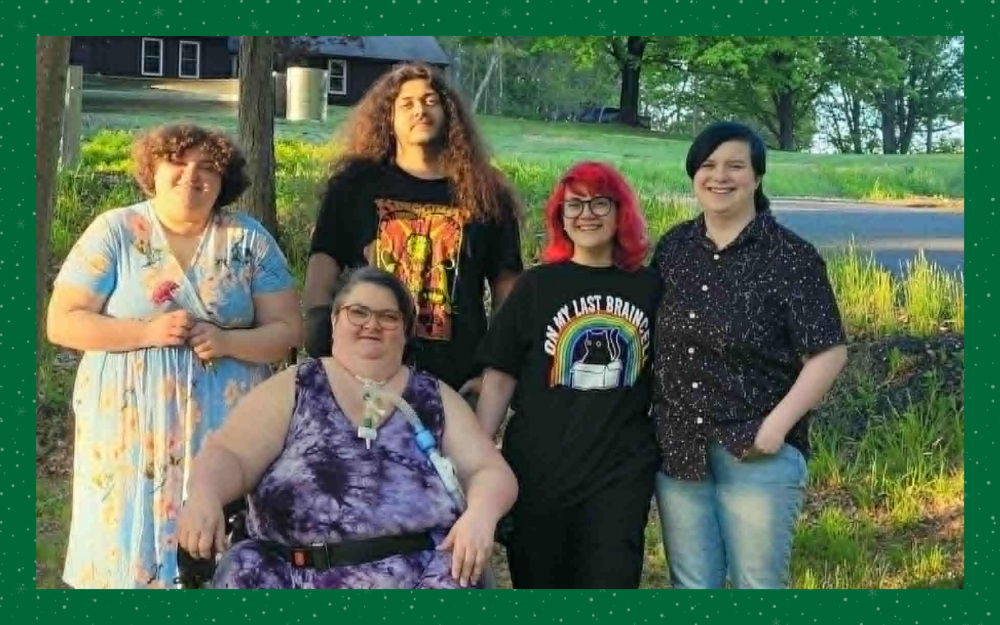
Jenny Richards
Massachusetts, Living With CMT
When Jenny was diagnosed with CMT in 2018, she had no idea it would uncover a long-hidden family connection. Years later, genetic testing confirmed her CMT is inherited — her maternal uncle also has it, and her two daughters tested positive.
Born with clubbed feet and mild arthrogryposis, Jenny has faced mobility challenges her entire life. As CMT progressed, severe breathing issues led to a tracheostomy and ventilator six years ago, taking away her ability to work, drive and even speak — “the most devastating and frustrating” loss of all. Once passionate about cooking, baking, decorating and singing with her kids during the holidays, she now relies on others to carry out those traditions. “It’s just not the same as doing it how you want it done,” she says.
Still, Jenny finds joy in what she can do — gift shopping and wrapping with her husband and laughing with her family as they belt out The Muppets’ 12 Days of Christmas. “It’s not Christmas until we all get through it and BA DUM DUM DUM as loud as possible.”
What matters most now is time with loved ones — listening to their laughter, conversation and jokes. “We are a goofy bunch, and I love that.”
Her greatest wish is for health, a cure and the ability to breathe and speak on her own again — not only for herself but for her children. “A cure is the best gift anyone could give. It’s giving hope. It’s giving life. It’s letting families piece together the parts of their lives they’ve lost. It’s letting a child run unhindered. It’s giving a wife, a mom, her ability to say, ‘I love you,’ in her own voice again.”
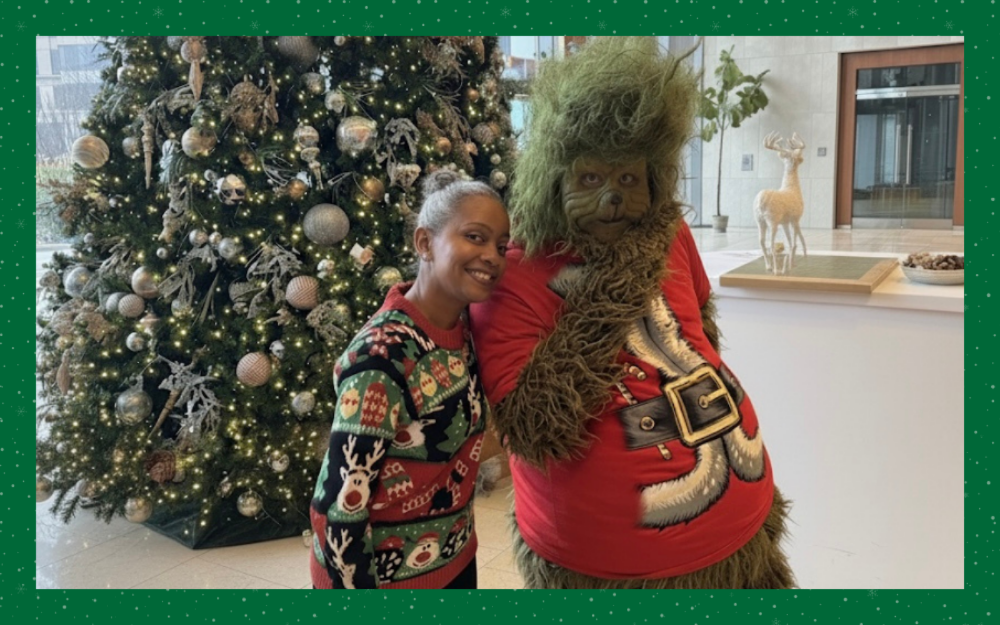
Paula Hamilton
Georgia, Living With CMT1A
When Paula was diagnosed with CMT1A at 35, it came as a surprise. With no family history or signs of the disease in either parent, she was left unsure of its origin.
Over the years, CMT has changed how Paula approaches daily life. The muscle loss in her hands has made activities like cooking or opening jars more difficult, and she’s had to give up some hobbies she once loved, like playing cards, while hesitating to try new ones. “I generally like to try new activities; however, I have become less likely to explore them because I fear I will not be able to do them,” she said.
Still, Paula focuses on what she can do. Her favorite holiday traditions — cooking, decorating, writing Christmas cards, and traveling to see family — remain a source of joy and gratitude. “Time means appreciating the now and celebrating the abilities I have. It’s an awareness of the sights, smells and sounds that only the holidays bring.”
The hardest part of living with CMT, she says, is the loneliness of not having anyone else in her family with the disease. A treatment or cure would mean a new lease on life for Paula — restoring strength and confidence. “You are not just supporting research to treat or cure a disease; you are making individuals whole physically and mentally. And when they are whole, so are their loved ones.”
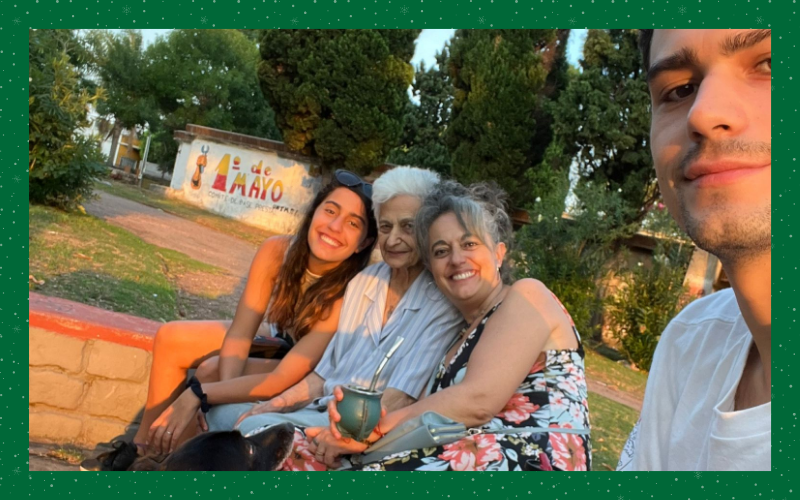
Rocío Iglesias
Uruguay, Living With CMT
Rocío Iglesias has lived with CMT since she was diagnosed at 13. CMT runs deep in her family — at least four generations have been affected — and over time, it has significantly changed her daily life. After 33 years of working, she had to go on disability as her symptoms progressed. Stiffness, loss of strength, and reduced motor skills in her hands make everyday tasks difficult, and severe muscle loss in her legs and feet has left them feeling “disconnected.”
One of the hardest parts of living with CMT, Rocío shares, is the physical and emotional toll — the falls, the fear of what’s to come, and the constant need to ask for help. “It can make you feel useless,” she admits. The uncertainty weighs heavily, especially as she thinks about how the disease will continue to affect her life.
Over time, she has also lost parts of her holiday experiences. Rocío can no longer go to the beach alone, and if the waves are strong, she can’t go into the water at all. Yet she remains grateful for what CMT has not taken from her. Time with her family is still her greatest joy — walking together, sitting on the sand to feel the sun, and sharing slow, meaningful moments. “Time enjoyed with quality — whether it’s one hour or four — is the best. Spending time with my friends and my children makes you feel like time doesn’t pass.”
Her hope is for the future, not just for herself but for her daughter, who also inherited CMT. “I hope that one day a cure will be found, especially so my daughter can have a happy life.”
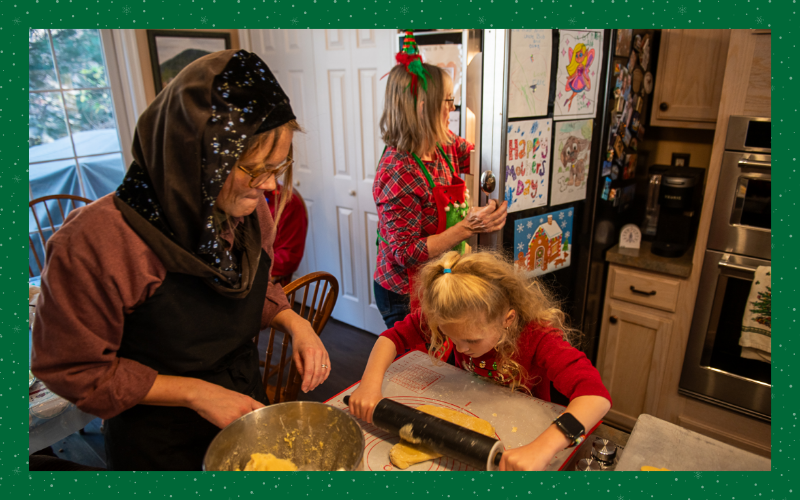
Kate Algera
New York, Living With CMT1B
Kate has lived with CMT1B, which has affected her family for at least three generations. For most of her life, she didn’t notice major symptoms — but in her mid-30s, that began to change.
Over the past three years, CMT has increasingly affected her hearing. She now experiences constant tinnitus, musical hallucinations and hearing distortion, making everyday conversations difficult. Busy holiday gatherings, once filled with laughter and music, can now feel overwhelming, especially when she can’t see people’s faces as they speak.
Still, some traditions bring her joy and keep her connected to the people she loves. Every December, Kate joins her spirited stepmom, Cindy, for their annual cookie bake. She loves rolling out the sugar cookie dough, carefully cutting out as many shapes as she can, and sharing the results with her family. “I hope to keep doing this because I get to be in the middle of loved ones while creating something we’ll all enjoy together,” Kate says.
Living with CMT can be isolating, and the uncertainty of what’s to come is daunting. “I’m only at the beginning of my CMT journey and I can’t deny that I’m afraid of what I will lose, and how I will lose it, in the years to come. A cure would mean stopping the progression of whatever is coming. It could even mean reversing it in some ways. That’s hard for me to think about because of how emotional it makes me feel. It would give me a new lease on life.”
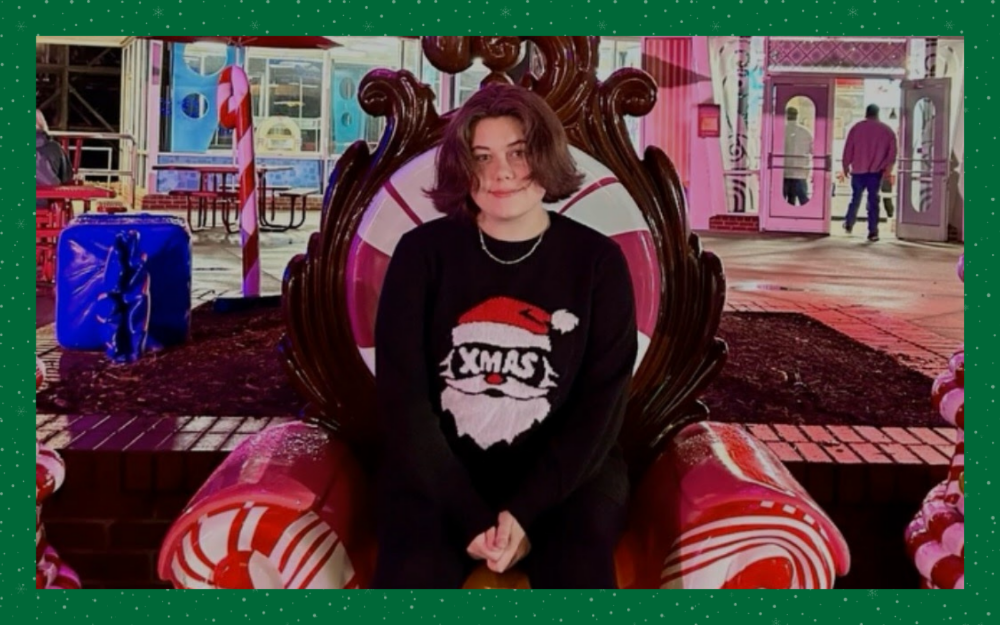
Grace Brusky
South Carolina, Living With CMT1A
Grace was diagnosed with CMT1A just before her 16th birthday. Her CMT is genetic — her dad has it too. Over time, the disease has changed the way she experiences daily life and has impacted activities she once loved. Grace loved playing sports, especially basketball, but as her symptoms worsened, she started getting hurt more often — eventually falling every time she ran.
Holidays have changed for Grace too, and even walking around the local amusement park to see the Christmas lights can be tricky. She has to pace herself and watch her balance, but she treasures visiting the park each year to ride the roller coasters and enjoy the lights. “The lights, the music, and just being there with my family make it feel like Christmas to me,” she said.
The hardest part of living with CMT, Grace admits, is seeing other kids do things she can’t. “It’s not jealousy. It’s wishing my body could keep up with what my heart wants to do. Sometimes it’s tough watching from the sidelines, but it’s also taught me to appreciate the things I can do and find my own way to shine.”
A treatment or a cure would mean getting time back. “It’s not just about walking easier; it’s about protecting the moments that matter, spending time with family, chasing dreams, and just being a normal teenager without holding back. CMT is part of my life, but it doesn’t define it, and your support helps make sure it never has to.”
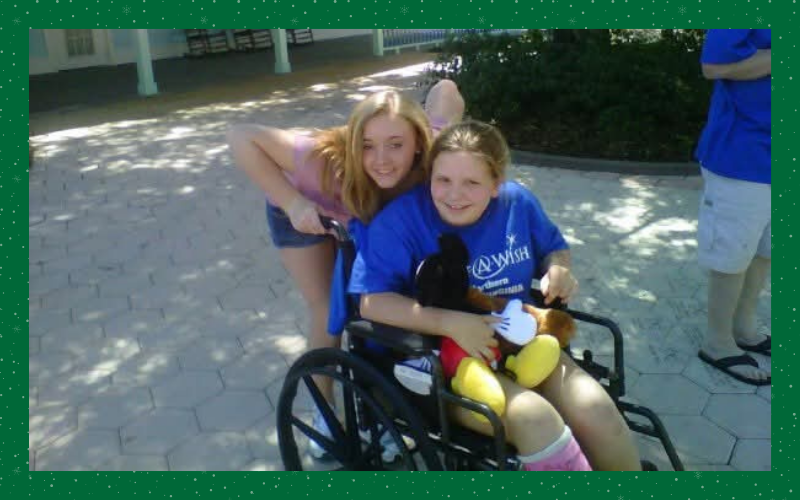
Alyccia Barker
West Virginia, Living With CMT
When Alyccia was diagnosed with CMT at about five years old, she discovered she was part of a long family history — at least three generations before her have been affected. Her CMT has made it impossible to play sports and makes walking long distances, uphills or in the snow very painful. “The wintertime is very hard for me, and I experience a lot of pain when I walk long distances,” she says.
The holidays can be especially challenging. “It’s hard to get around in the snow, so at times I’ve had to miss certain things unless I can get a ride somewhere.” Yet Alyccia treasures the moments she can spend with her family during Thanksgiving and Christmas.
The hardest part of living with CMT, she says, is the constant pain and the difficulty with simple tasks like writing. A treatment or cure would change everything. “I wouldn’t be in pain anymore, and neither would other people who have CMT, including the younger generation.”
For Alyccia, the fear of eventually needing a walker or wheelchair is very real — “I know that is a possibility for me one day, and I hope not to.” She hopes that support for CMT research will give people like her the chance to remain ambulatory and keep living life on their own terms.
Lighting the Future: A Mother’s Fight for a Cure
Every December, Kaileen looks for light.
Not just the glittering bulbs strung across her Canadian neighborhood — but the kind of light that reminds her that hope still exists.
Because for Kaileen, simple joys like wrapping presents or finding her voice again are no longer guaranteed. Yet her greatest joy — her young son, Jacob — keeps that light shining.
And the road to finding that light began long before her diagnosis.



